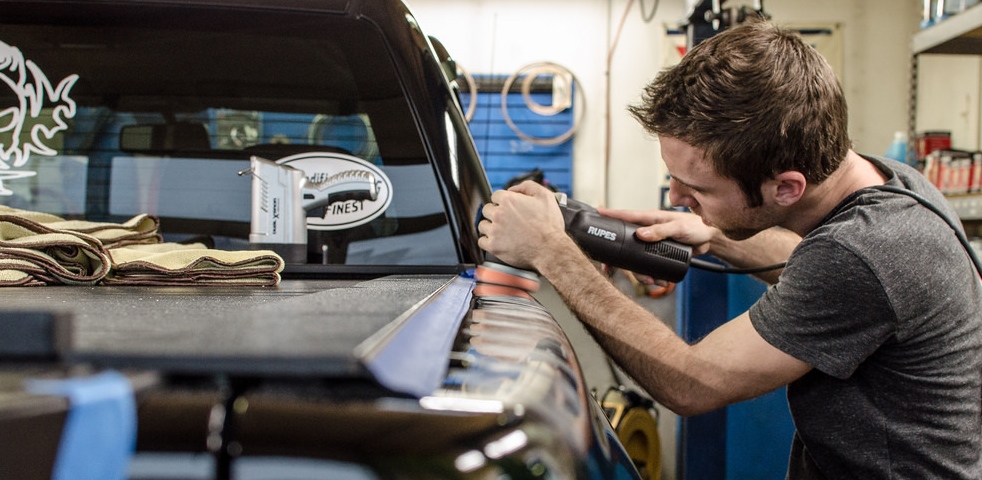Rupes machines have quickly become a household name among professional detailers. Their Bigfoot LHR15ES and LHR21ES machines took the detailing world by storm and have become the current go-to products for polishing.
I have been patiently waiting for the release of a Rupes electric 3″ machine (since they already had a pneumatic unit). Until now, I have been relying on my Porter Cable 7424 XP for all of my work with 3″ and 4″ pads. This machine has been effective, but once you get used to the smooth feeling, fast correction of the Big Foot machines, you’ll never want to use another machine.
Like all other Rupes machines, the LHR75e features a longer stroke (side to side motion) than other machines on the market. The stroke of the Rupes Mini measures 12mm, while other DA machines on the market are much less. This larger motion allows the mini to correct faster than other dual action polishers, and requires very little pressure to correct defects. This is my favorite part about the Rupes machines. I rarely need to use additional pressure, the weight of my hand and the machine is all that is needed to produce excellent results.
Photo: 50/50 comparison of b-pillars. Corrected with Rupes LHR 75E, 3″ Lake Country Orange Light Cutting Pad, Menzerna FG400 (was later polished with Optimum Hyper Polish)
I found the size and weight of this machine to be very comfortable. It is very similar in size to other smaller machines like the Porter Cable 7424Xp. The only thing that took some getting used to is that the machine speed control is on the bottom and is not easily visible while you are using it. I much prefer the speed control to be on the side of the machine near where I rest my thumb, but it is a small change that I will adapt to.
This machine comes with a three inch backing plate that works well with any 3″ or 4″ pads. In the previous photo, I am using a 3″ lake country pad. It is also worth noting that because this machine is a free spinning DA (it is not forced rotation), the pad may slow down or stop on curved or complex panels. This is common with free spinning machines and requires some variations in technique to overcome.
My first impressions with this machine were great. It has lived up to the “Rupes Standard” that I have grown accustomed to with my LHR 21ES. I look forward to using it a lot more this year!
As always, thanks for reading!
